On January 31st, 1990, the unlikeliest sight emerged in the heart of Moscow — the soft yellow glow of iconic golden arches of McDonald’s. Against all odds, the American burger giant had breached the Iron Curtain. An uncompromising symbol of American capitalism had finally come to the heart of the Soviet Union. Here’s the story on how it all happened and why it was so important.
Table of Contents[Hide][Show]
- McDonald’s Makes Their Case To Soviet Officials
- McDonald’s Massively Underestimates The Russian Appetite For Big Macs & Western Culture
- Not Everyone In The Soviet Union Was Excited About Russia’s First McDonald’s
- The Rise And Fall Of McDonald’s In Russia
- Will McDonald’s Golden Arches Ever Return To Russia?
McDonald’s Makes Their Case To Soviet Officials
Bringing McDonald’s to Russia wasn’t easy. McDonald’s Canada president George Cohon had relentlessly pursued Soviet officials to allow the fast food chain to enter the USSR since meeting them at the 1976 Summer Olympics in Montreal.
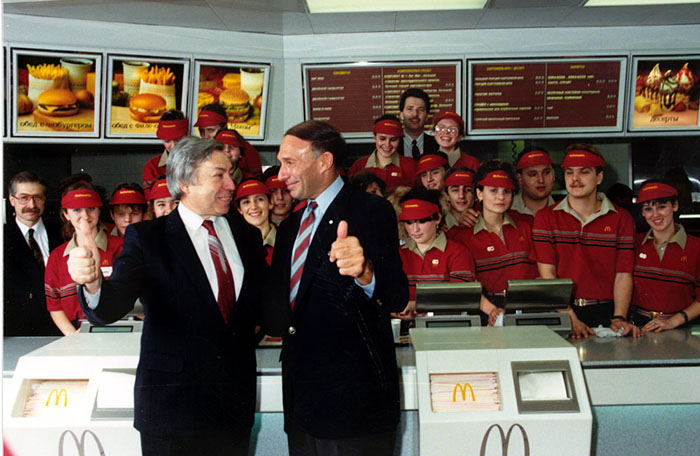
With the Cold War thawing, the Soviets finally gave the idea serious consideration. Almost 15-years after that initial meeting in Montreal, construction began on the largest McDonald’s in the world at the time in Moscow’s Pushkin Square.
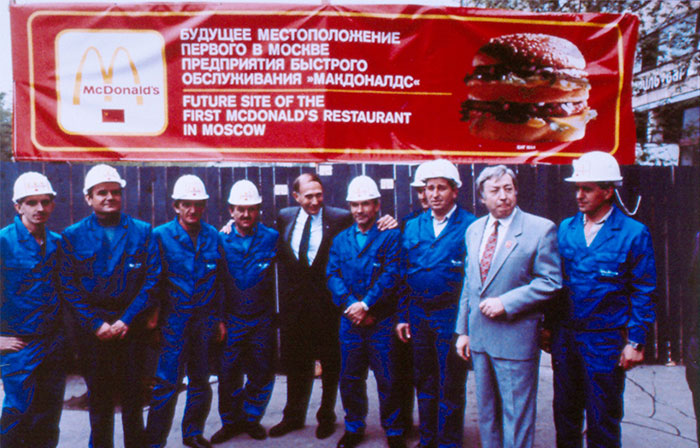
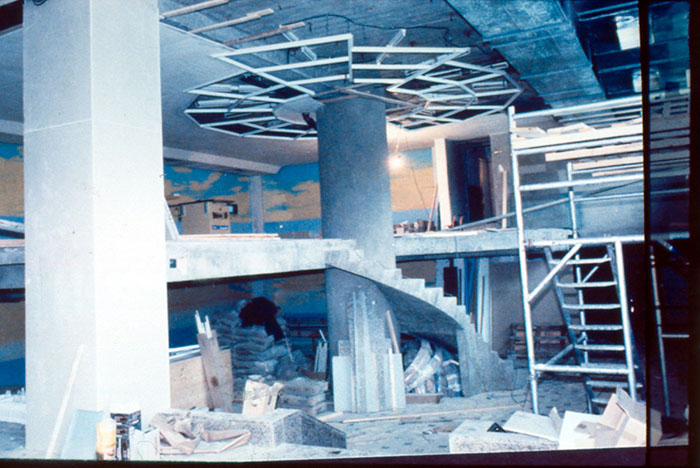
McDonald’s Massively Underestimates The Russian Appetite For Big Macs & Western Culture
A big restaurant needs a big staff. To man the 900-seat restaurant, McDonald’s had hired 600 of the staggering 35,000 eager applicants that applied.
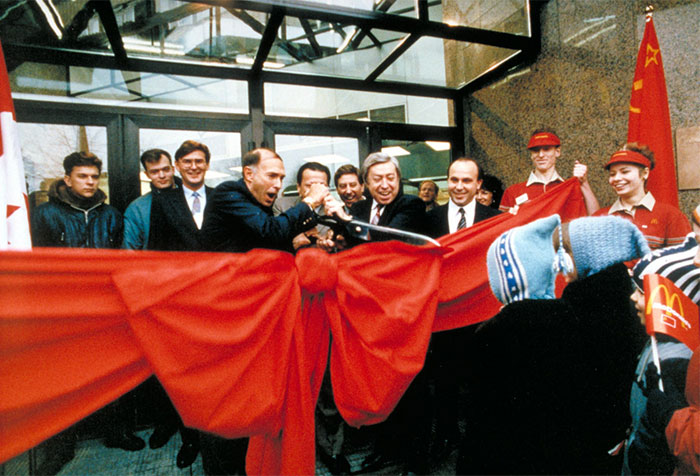
According to internal McDonald’s estimates, they were anticipating only about 1,000 customers daily. This estimation grossly underestimated the Russian appetite for Big Macs.
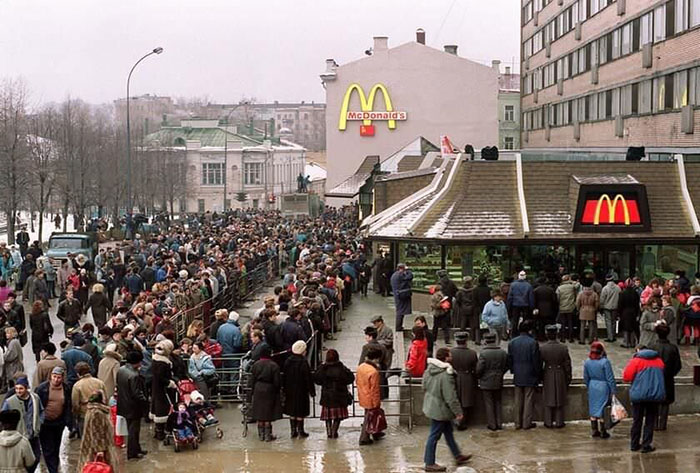
As dawn broke on January 31st, the square filled with restless crowds. Over 5,000 people were gathered outside the new restaurant before it even opened. The happy mob then counted down the minutes until the clock struck 10 am when Ronald McDonald would officially swing open the doors. The ecstatic crowd then rushed in desperate for their first taste of “America” that had eluded them for so long.
From the moment the doors opened, both the cash registers and staff raced to keep up with orders. In total, over 30,000 people were served meals that opening day.
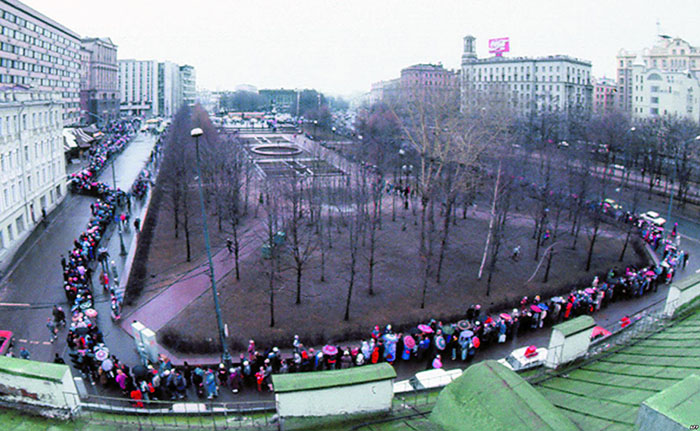
And it wasn’t just the food that attracted the Russian population to McDonald’s. Most people in the Soviet Union had never seen things self-serve soda fountains before. Even simple western standards, like clean restrooms with toilet paper, were exciting novelties for most Muscovites.
Even though the McDonald’s menu was expensive by Russian standards, that didn’t keep the crowds away. At 3.75 rubles, the iconic Bolshoi Mak burger (the Russiona version of the Big Mac) cost nearly two hours’ pay for the average Russian worker. The average monthly salary at the time was only 150 rubles. But money was no object for a slice of Americana they had only glimpsed in bootleg Western movies until now.
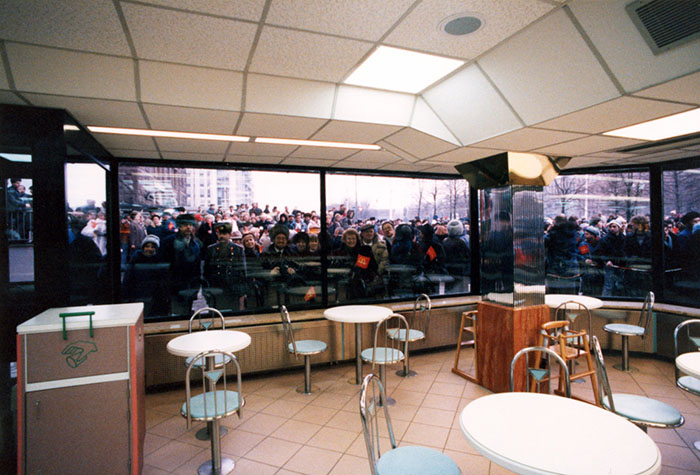
McDonald’s also served as a refuge from the dreary reality of Soviet life. Instead of lining up for simple supplies like soap and eggs, Muscovites now queued for indulgent milkshakes and french fries. Gloomy government-run cafeterias full old women wearing grey babushkas gave way to a kaleidoscope of color and youth. On the opening day of Russia’s first McDonald’s, the future felt at hand for a generation raised on empty promises during the Cold War.
Not Everyone In The Soviet Union Was Excited About Russia’s First McDonald’s
Amidst the rampant excitement, some saw the “foreign invasion” with skepticism. The Soviet government newspaper Izvestia warned the restaurant could become overwhelmed by its own success. It joked McDonald’s might require an emergency airlift akin to the American evacuation from Saigon in 1975 should troubles arise.
Critics also doubted the chain’s ability to maintain high standards, expecting dirty cutlery and cups to soon replace McDonald’s disposable wares. Such apprehension failed to dampen the mood on opening day. Instead, ordinary Russians voted with their rubles and overwhelmingly endorsed McDonald’s by collectively consuming over 30,000 meals across 25 hours of non-stop service. McDonald’s had passed its litmus test with flying colors.
But after the incredible success of the first Russian McDonald’s, critics started to change their tune. McDonald’s was so popular that politicians even used restaurant openings as campaign stops. Future Russian president Boris Yeltsin showed up at the June 1993 McDonald’s opening at Moscow’s Tverskaya Ulitsa. He got a tour of the restaurant, shook some hands, and ordered a Big Mac.
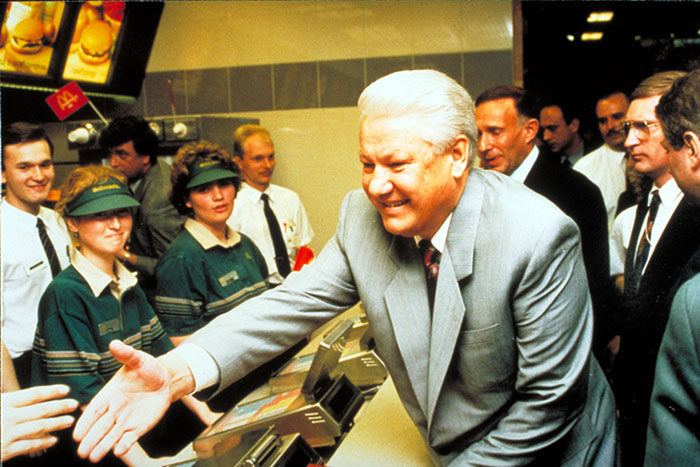
The Rise And Fall Of McDonald’s In Russia
The first Soviet McDonald’s heralded the promise of progress. It granted Russians a taste of abundance woefully absent from Soviet life in the final years before its collapse. The swift success of the first McDonald’s in Russia boosted the almost immediate launch of more McDonald’s restaurants across Moscow and then the rest of Russia. By 2022, Russians could find a McDonald’s in nearly every large town and city across the nation’s 11 time zones.
However, Russia’s invasion of Ukraine reversed three decades of post-communist global integration almost overnight. As bombs fell on Kyiv, the golden arches faded from Russian skylines potentially forever. The flashy symbol of harmony between superpowers was over. Within weeks of the start of the Russia Ukraine War, McDonald’s decided to abandon its nearly 850 restaurants across Russia.
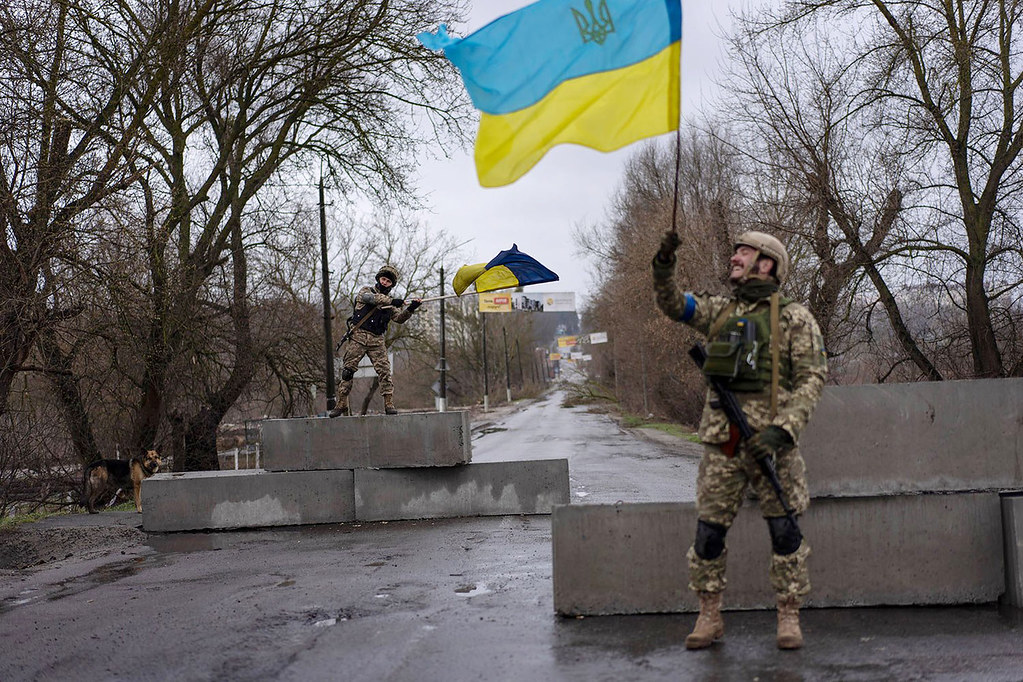
Will McDonald’s Golden Arches Ever Return To Russia?
For those first starry-eyed Soviets who witnessed dawn break over Pushkin Square in 1990, the experience is likely a fond memory. It was the day Moscow glimpsed a future once unimaginable; the morning the Iron Curtain parted just widely enough to allow a ripple of freedom (and french fries) to pass through. The Soviet empire would still take years to dissolve, but a hungry people had already voted with the only ballots they could. Their stomaches.
In 1990, the first McDonald’s restaurant to open in the then Soviet Union sparked a wave of excitement, drawing a crowd of over 30,000 people. #BigMac #McDonalds #USSR #Russia #SovietUnion #Moscow #fastfood Share on XI’m a freelance writer with ten years of experience writing articles and article reviews. My blog URL address is http://peoplepower.ning.com

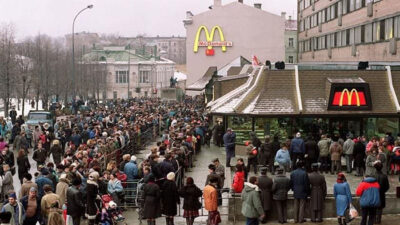
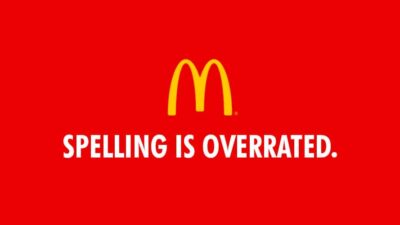
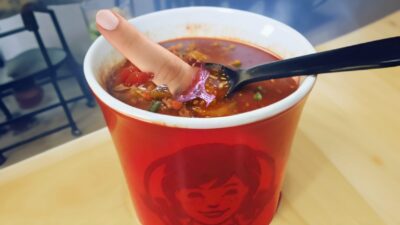






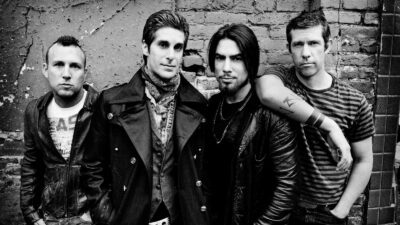







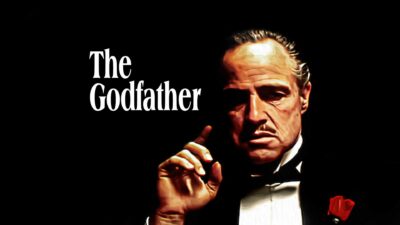
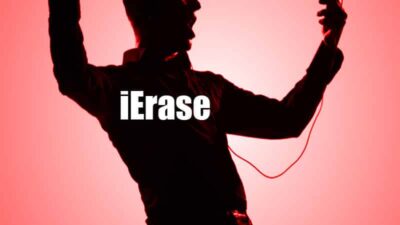


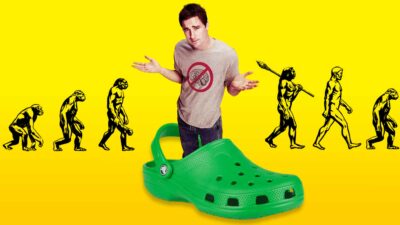


 From James Bond to Han Solo: 10 Iconic Acting Roles That Burt Reynolds Rejected
From James Bond to Han Solo: 10 Iconic Acting Roles That Burt Reynolds Rejected
Leave a Reply